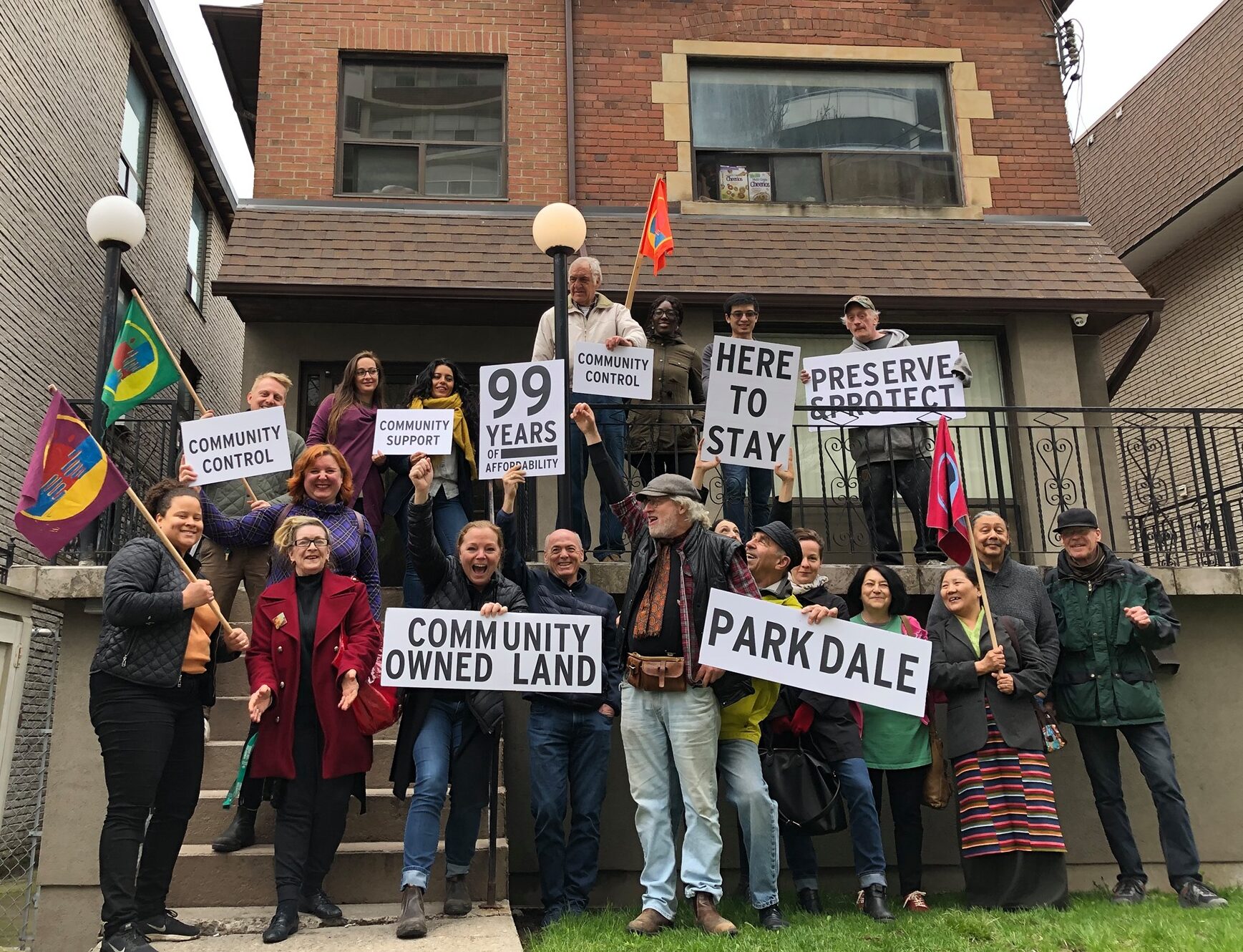At a time when governments across Canada are struggling to turn housing commitments into lasting, equitable outcomes, A Case for Community Land Trusts in Canada arrives as a timely and necessary intervention. Authored by Dr. Kuni Kamizaki, Assistant Professor at UBC’s School of Community and Regional Planning, this report argues for a structural shift in Canada’s housing system rooted in the growing momentum of Community Land Trusts (CLTs). Drawing on real-world examples and actionable public policy recommendations, the paper is not just a primer on CLTs, it is a clear call-to-action for policymakers, advocates, and communities alike.
Through a clear and in-depth exploration, Dr. Kamizaki traces the emergence and evolution of CLTs in Canada, emphasizing what sets them apart from both market-based and conventional non-market housing. His analysis of established CLTs across the country demonstrates that this model offers a viable, equity-driven path to what he calls the “equitable transformation of the housing system.” The paper’s release is particularly timely given that, despite the right to housing being enshrined in the National Housing Strategy Act, persistent inequities and unaffordability remain urgent challenges.
Community Land Trust 101
“Community land trusts are non-profit community organizations that take land off the speculative real estate market and democratically steward land for long-term community benefits and priorities, particularly for low-income neighbourhoods, communities of colour, and other equity-deserving groups.”
Today, approximately 45 CLTs exist across Canada, and more than 60% have emerged or are nearing launch within the past five years. This surge reflects the model’s adaptability and its potential to fill persistent gaps left by traditional housing approaches, which have failed to address key drivers of the crisis such as speculation, displacement, and homelessness.
CLTs stand out for their “focus on land stewardship and being rooted in principles of collective ownership, permanent affordability, and community governance.” They prioritize not just housing, but the broader question of land: “who owns land, who has decision-making power over what can be done on land, and who can benefit from public and community investments to create affordable housing.” In doing so, CLTs offer governments a meaningful, on-the-ground opportunity to act on commitments to “reparation, reconciliation, and land back.”
The Distinct Benefits of the CLT Model
CLTs do more than offer housing—they help reshape systems. Among their unique contributions:
- Building pathways towards reparation, reconciliation, and racial justice
- Creating permanent affordability through community ownership and stewardship
- Preserving and turning at-risk affordable housing into community-owned homes
- Taking perpetual responsibility for community land stewardship and asset management
- Enabling diverse development in service of community housing sector growth
- Preserving publicly held assets for long-term community benefit
- Linking housing with community development and democratic governance
A Structural Shift in the Housing System and Policy Objectives
To unlock the full potential of CLTs, Dr. Kamizaki outlines eight policy recommendations that span all levels of government and involve key sectoral actors:
1. Prioritize Long-Term Affordability
“Federal, provincial, and municipal governments should integrate long-term affordability requirements into affordable housing programs.”
Rather than relying on short-term affordability standards, governments should embed lasting affordability (e.g. 99 years) into the design of housing programs, subsidies, and land transfers.
2. Support BIPOC-Led CLTs as Acts of Reparation and Reconciliation
“Federal, provincial, and municipal governments should support BIPOC-led CLTs as a commitment to reparation and reconciliation.”
Governments should explicitly recognize CLTs as mechanisms to meet equity and anti-racism goals, including by allocating land and resources to BIPOC-led initiatives and supporting their long-term development.
3. Streamline Public Acquisition Support
“Federal, provincial, and municipal governments should develop and expand intergovernmental, single-source housing acquisition programs.”
Public investment is essential to reduce acquisition costs and preserve at-risk affordable housing. A single-source funding model simplifies the process and helps CLTs navigate the complex acquisition landscape more efficiently.
4. Structure Acquisition Grants for Long-Term Impact
“Federal, provincial, and municipal governments should structure acquisition grants with covenants or deed restrictions for regulatory agreements.”
Replacing forgivable loan structures with covenants or deed restrictions would improve the financial and operational stability of CLTs while ensuring lasting affordability.
5. Transfer Public Lands Systematically
“Federal, provincial, and municipal governments should direct publicly held lands to CLTs through a land disposition program for CLT-led redevelopment.”
To enable long-term affordability, public lands must be transferred to CLTs through coordinated and consistent programs, not one-off arrangements, which would allow for strategic acquisition planning.
6. Build Municipal Support Programs
“Municipal governments should develop comprehensive support programs for CLTs.”
Municipalities can help lead the charge by developing enabling policies, securing senior-level funding, and supporting CLT-led housing preservation efforts.
7. Provide Technical Support to Governments
“The Canadian Network of Community Land Trusts (CNCLT) should develop a program that offers consulting and technical assistance services to governments.”
To address gaps in familiarity with CLTs, CNCLT should support governments through training, funding design, and implementation guidance tailored to local needs.
8. Create a New Legal Framework for CLTs
“CNCLT and Canada Revenue Agency should work together to define a CLT as a different a type of a charitable non-profit organization to meet unique contributions beyond existing frameworks.”
The existing legal framework restricts CLTs from engaging in essential community-supporting activities like operating co-op housing or affordable commercial space. A new designation would allow CLTs to fully meet community needs.
Offering Direction
As Canada strategizes ways to address housing inequities and the urgent need for systemic solutions, this report offers more than a diagnosis—it offers direction. A Case for Community Land Trusts in Canada brings clarity to a model that is gaining ground across the country and makes a persuasive argument for why now is the time to invest in CLTs as a long-term, equity-centred housing strategy. With clear policy pathways and community-led solutions at hand, governments and sector leaders have the opportunity and responsibility to act. The groundwork has been laid. What’s needed next is political will.
Read the Full ReportThis report is part of our Policy Report and Profile Series on Community Land Trusts, led by Dr. Susannah Bunce at the University of Toronto, School of Cities in partnership with the Canadian Network of Community Land Trusts.
The Balanced Supply of Housing is a SSHRC-CMHC funded, community-based research project at UBC that focuses on land use and housing financialization across Vancouver, Toronto, and Montreal.



